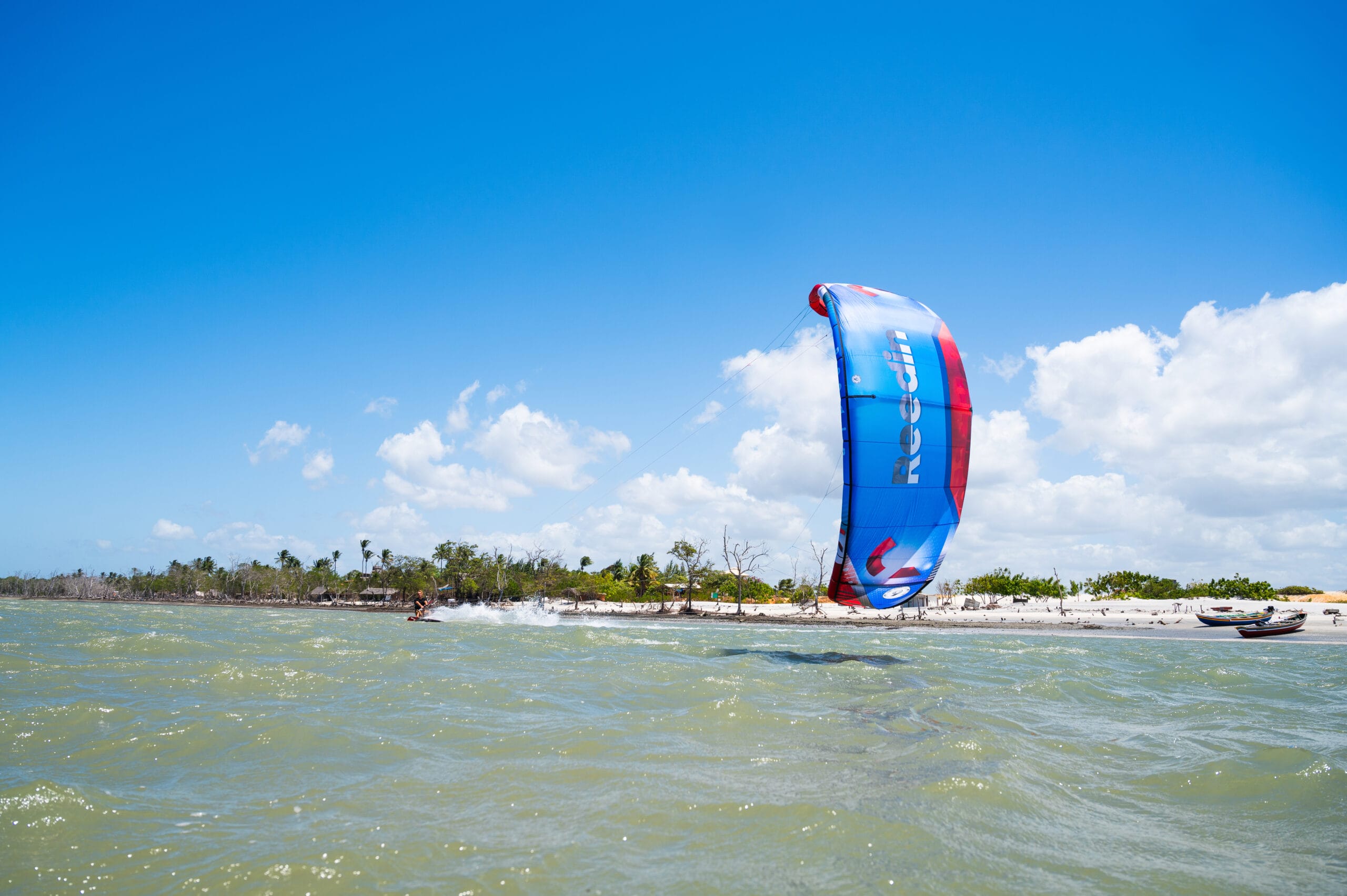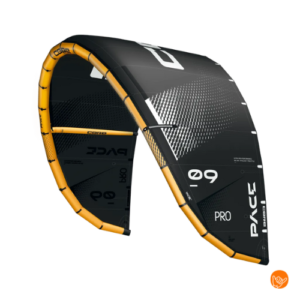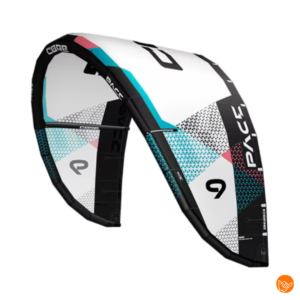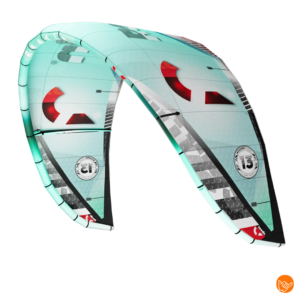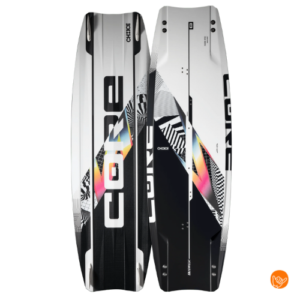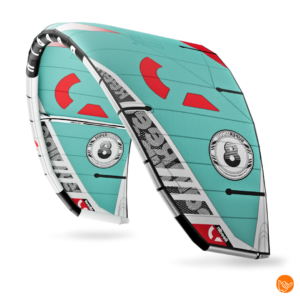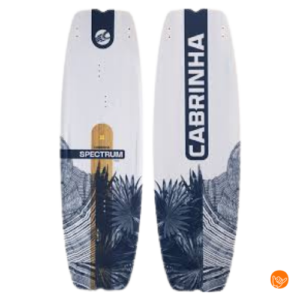The best season for kitesurfing trips depends on wind patterns, water temperature and local weather conditions of your chosen destination. In general, April through October offer excellent kitesurfing conditions in Europe, while tropical destinations are often suitable year-round. The ideal period varies by region, with factors such as wind strength, consistency and climate determining optimal kitesurfing experiences.
What determines the best season for kitesurfing trips?
The ideal kitesurfing season is determined by a combination of wind conditions, water temperature and weather patterns which together ensure optimal kitesurfing sessions. Wind force between 12-25 knots, consistent wind direction and pleasant air and water temperatures are the basis for perfect kitesurfing conditions.
Wind patterns are the most important factor in determining kitesurfing seasons. Different regions have their own wind cycles that are influenced by seasonal weather systems, such as monsoons in Asia or trade winds in tropical regions. These patterns determine when to expect the most reliable winds.
Water temperature plays a crucial role in your comfort while kitesurfing. Warmer waters allow for longer sessions without thick wetsuits, while colder waters require specific gear. The combination of air and water temperature determines which kitesurf gear you need for optimal comfort.
Local climate patterns, such as rainy seasons or hurricane periods, also affect kitesurfing opportunities. These factors determine not only safety, but also the overall experience of your kitesurfing trip.
Which months are ideal for kitesurfing trips in different parts of the world?
Europe offers the best kitesurfing conditions of April to October, with May through September being optimal for beginners due to steady winds and warm temperatures. Mediterranean destinations such as Turkey and Greece peak in June to August with consistent thermal winds.
Specific optimal periods apply to different continents:
- Europe: April-October (peak: June-August)
- Asia: November-March for tropical areas, May-September for temperate zones
- South America: September-March (southern hemisphere summer)
- North Africa: March-November with excellent conditions
- Caribbean: December-August (avoid hurricane season)
Asian destinations such as Vietnam and the Philippines have their best kitesurfing conditions during the dry seasons, usually from November to March. This period offers stable northeasterly winds and minimal precipitation.
South American hotspots such as Brazil and Venezuela are ideal during their summer months (December-March), when the southeast trade winds are strongest. This period combines perfect wind conditions with pleasant temperatures.
How does the kitesurfing season differ between popular destinations?
Popular kitesurfing destinations have different seasonal patterns which vary widely in terms of timing, wind reliability and optimal conditions. Egypt offers year-round kitesurfing, Brazil peaks from September to March, while Cape Verde is optimal from November to May.
Egypt (Hurghada/El Gouna) is known for its consistent northerly winds throughout the year. The best months are March to November, with winds between 15-25 knots. Water temperatures range from 22°C in winter to 28°C in summer.
Brazil's northeast coast (Cumbuco, Jericoacoara) has its peak from September to February. Southeast trade winds are most reliable during this period, with average winds of 18-25 knots and water temperatures around 26-28°C.
Cape Verde offers excellent conditions from November to May, when northeast trade winds reach the island. This period is characterized by steady winds of 16-22 knots and water temperatures between 23-26°C.
Turkey (Alacati) has its best season from May to October, with thermal winds usually picking up in the afternoon. July and August offer the most consistent conditions with daily winds between 15-20 knots.
Why is wind direction and strength so important when choosing your kitesurfing season?
Wind direction and force directly determine the quality of your kitesurfing experience and safety on the water. Ideal wind speeds range from 12-25 knots, with side-shore to side-onshore winds providing the safest and most enjoyable conditions for kitesurfers of all levels.
Wind force classification for kitesurfing:
- 12-15 knots: Ideal for beginners and light wind kites
- 16-20 knots: Perfect for most kite surfers and kite sizes
- 21-25 knots: Suitable for experienced riders with smaller kites
- 26+ knots: Only for very experienced kitesurfers
Wind direction affects both safety and ridership. Side-shore wind (parallel to the coast) is considered ideal because it provides safe launch and landing opportunities. Onshore wind (from sea to land) can be dangerous for beginners, while offshore wind (from land to sea) is not recommended because of safety hazards.
Consistency of wind is crucial to a successful kitesurfing trip. Destinations with predictable daily wind patterns, such as thermal winds that pick up in the afternoon, provide more certainty for your kitesurfing planning than locations with erratic wind conditions.
What preparation do you need for kitesurfing trips in different seasons?
Seasonal preparation required custom kitesurfing equipment based on expected wind and temperature conditions. Water temperature determines your wetsuit choice, while expected wind forces affect the kite sizes and board selection needed for optimal performance.
For different seasons, you need specific gear. In colder months (October-March) thick wetsuits (4/3mm or 5/4mm) are essential, while summer months often suffice with thin wetsuits or lycras. The choice of kite sizes depends on seasonal wind patterns - lighter winds require larger kites (12-15m), stronger winds smaller kites (7-10m).
A flexible kitesurfing gear subscription can be ideal for seasonal trips because you can try out different kite sizes and boards depending on your destination. This avoids expensive investments in gear that you may only use for a few weeks a year.
Practical travel preparation includes checking local wind forecasts, arranging transportation for your gear, and inquiring about local kitesurfing regulations. Some destinations have specific rules for kitesurfing zones or require local permits.
For novice kitesurfers planning their first kitesurfing trip, it is wise to get a complete set to assemble suitable for the expected conditions. A flexible subscription offers the opportunity to try out different gear combinations before making your final choice. For specific advice on seasonal gear selection you can always Get in touch contact kitesurfing specialists who can help you make the right choices for your planned kitesurfing destination.

